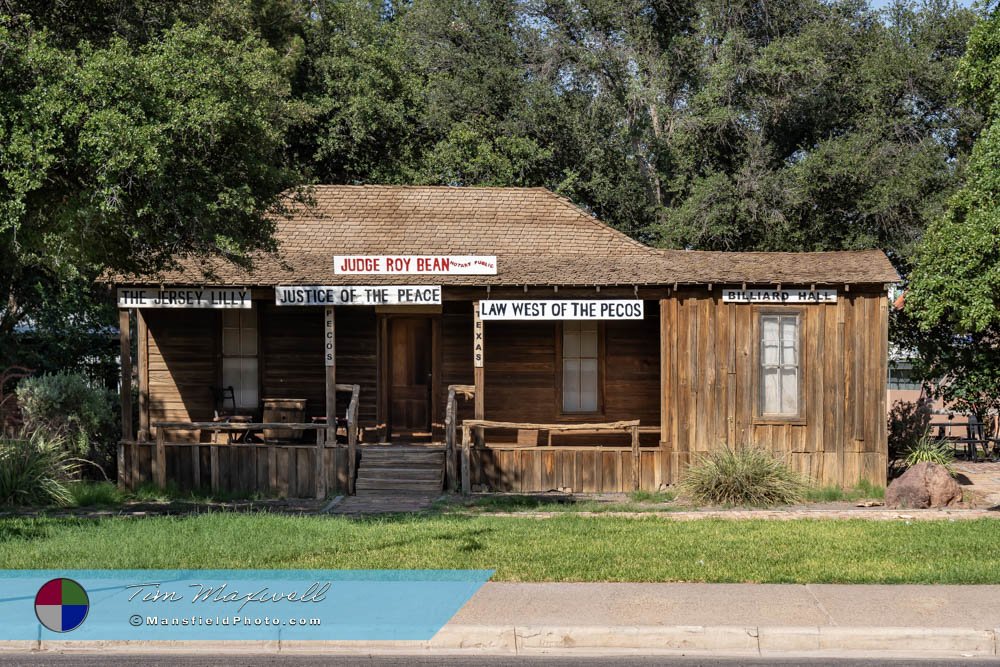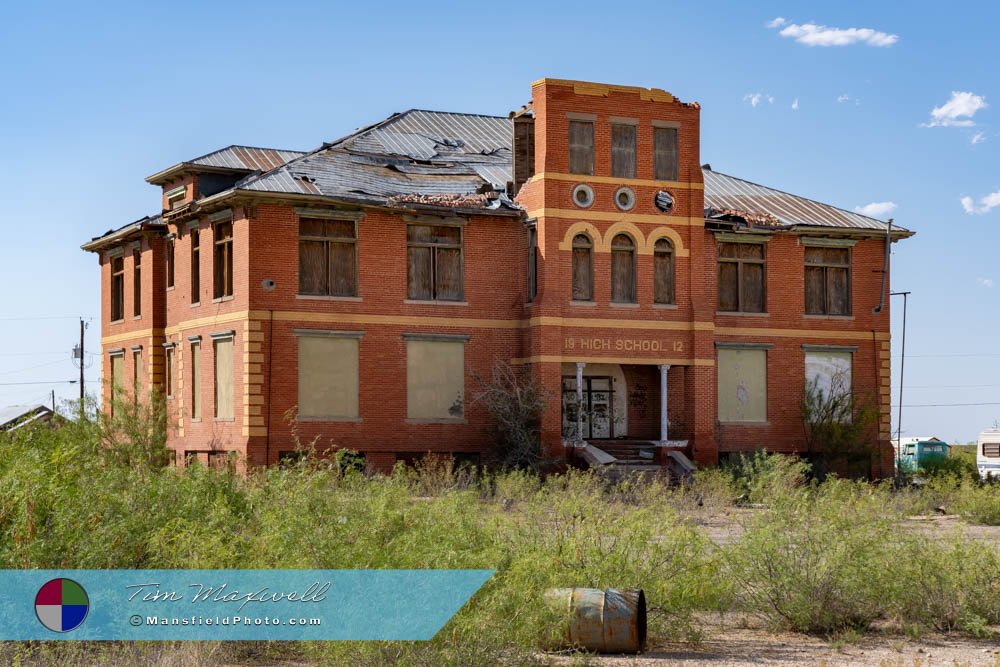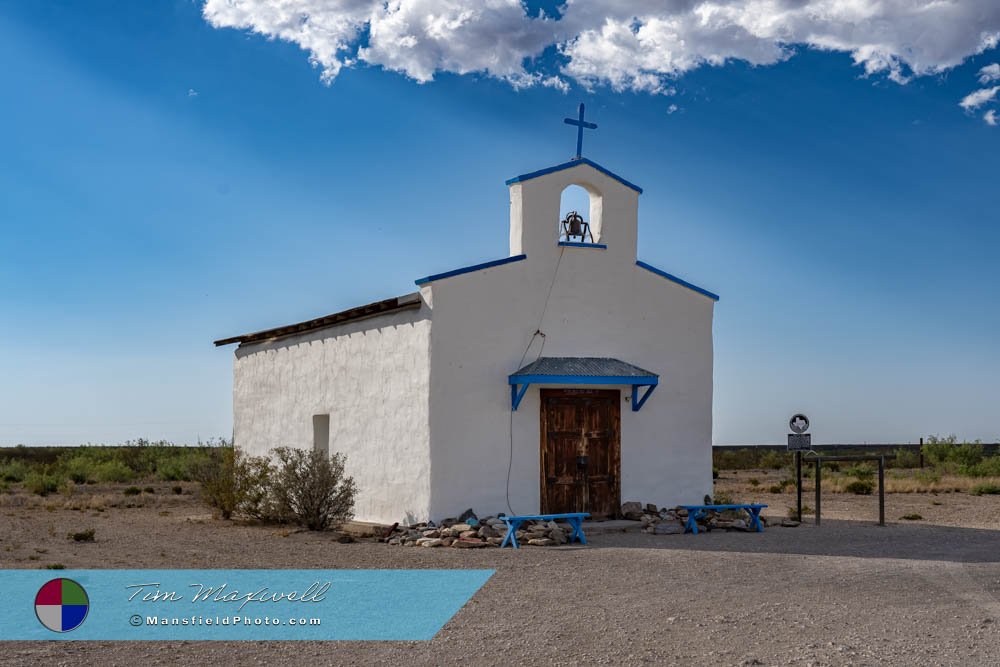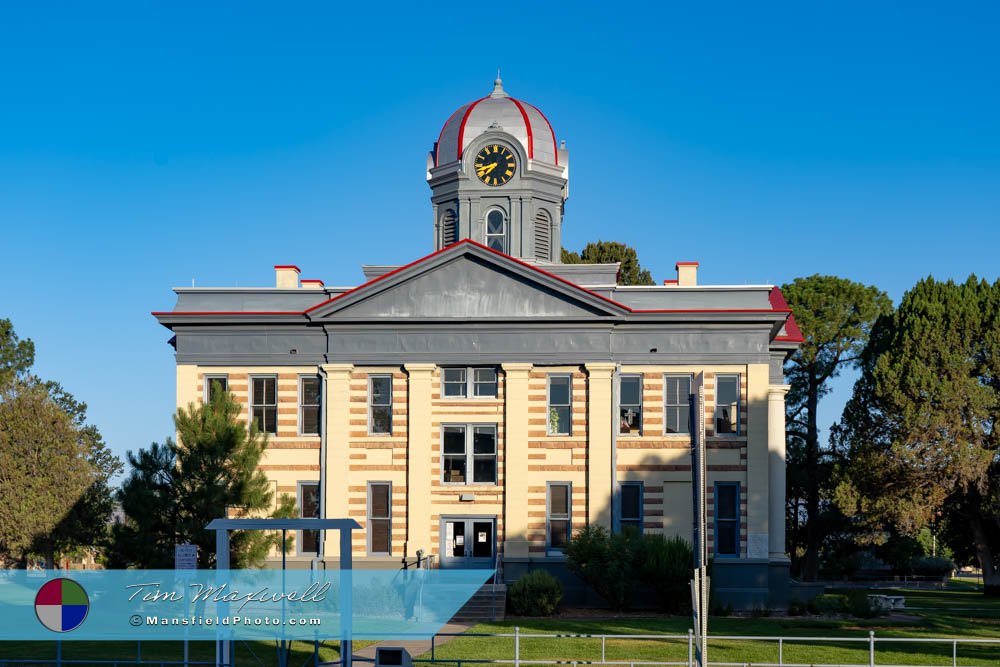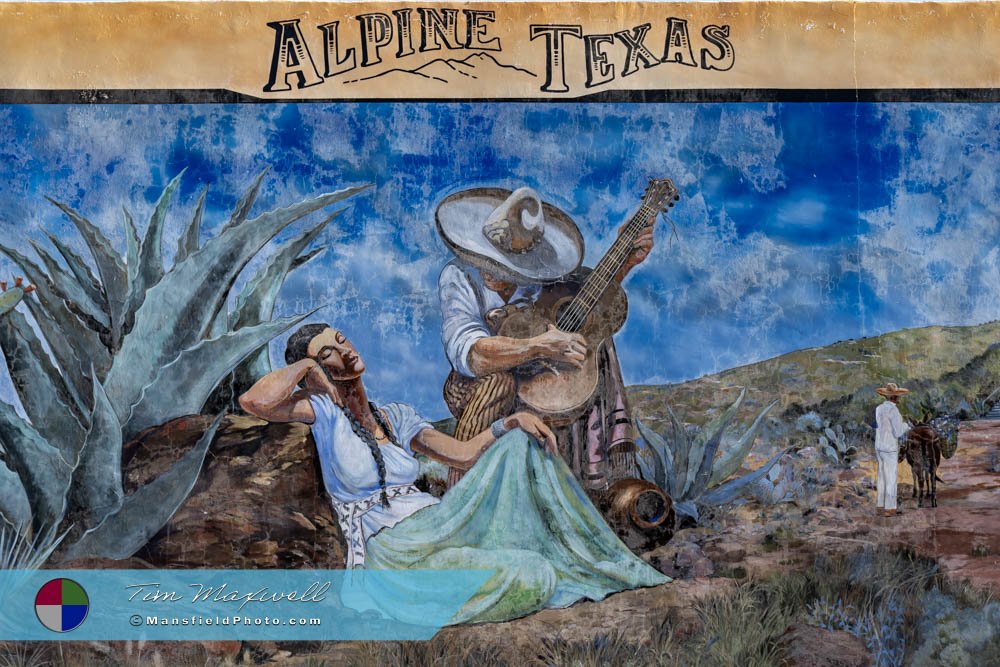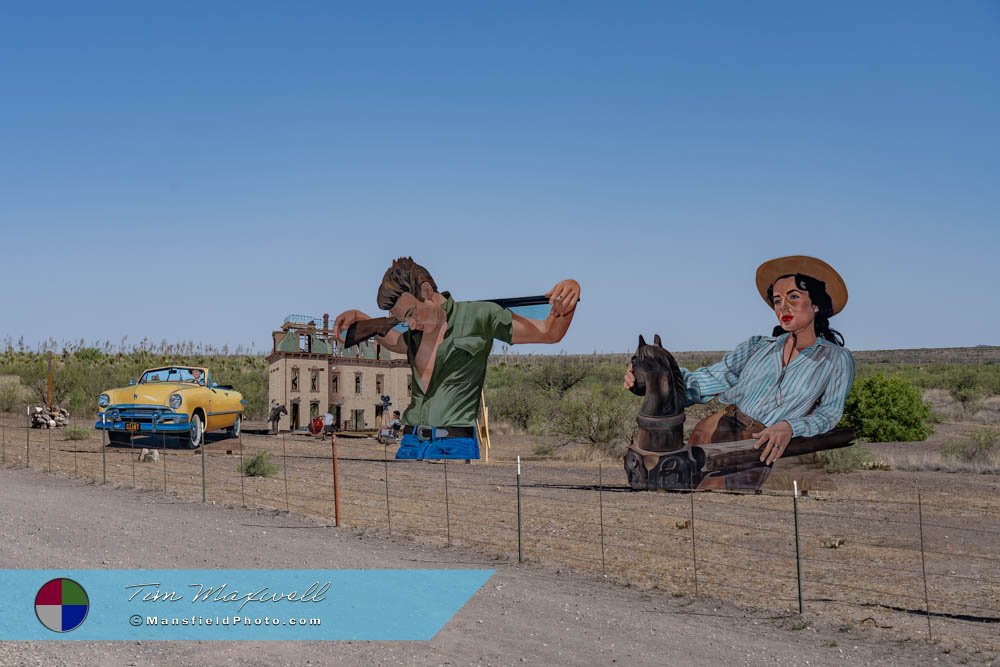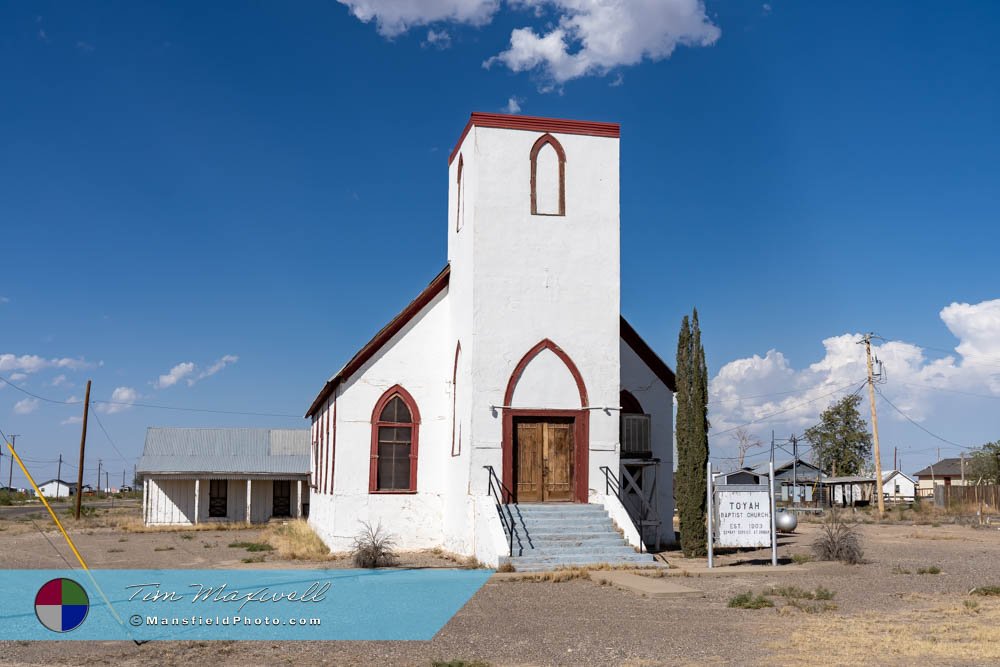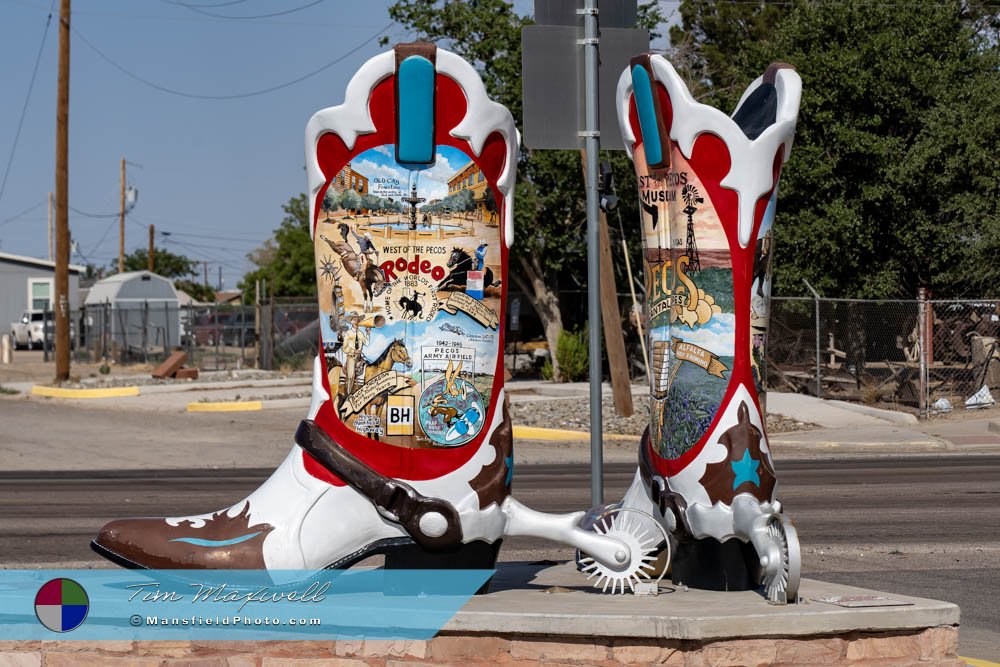Southwest Texas
– Small Towns Worth Discovering.
From desert sunsets to courthouse squares, discover the unforgettable beauty and history hiding in Southwest Texas.
Driving through the desert in the sweltering heat of Southwest Texas unveils a journey marked by rugged beauty and a sense of timelessness. As the road stretches endlessly ahead, the desert landscape morphs from dusty plains to rocky formations, each mile revealing glimpses of small towns nestled amid the arid terrain. Our first stop, Pecos emerges with its historic charm, a testament to its role in the Southwest Texas oil industry, while Toyah whispers tales of frontier days with its modest buildings and sparse population. Balmorhea offers a refreshing oasis with its renowned spring-fed swimming pool, a shimmering jewel amid the desert’s relentless sun.
Continuing the expedition, Fort Davis and Alpine stand as cultural gems in Southwest Texas, gateways to the region’s rich history and culture. Fort Davis, steeped in frontier heritage, boasts a well-preserved fort and panoramic views of the surrounding mountains. Alpine captivates with its small-town allure, welcoming travelers with local art galleries and cozy cafes. Marfa, renowned for its minimalist art installations and mysterious Marfa Lights, adds a surreal touch to the journey, inviting contemplation under the vast desert sky. Finally, Valentine punctuates the trip with its iconic Prada Marfa art installation, a surprising and whimsical encounter in the midst of the rugged desert landscape. Together, these towns form a tapestry of Southwestern life, where the relentless summer heat only enhances the allure of their storied past and enduring resilience.
Pecos, Texas
Pecos, Texas, is a town rich in history and cultural significance, renowned for its deep ties to the cowboy heritage and agricultural prowess. Established in the late 19th century, Pecos is famously credited with hosting the world’s first rodeo on July 4, 1883, an event that firmly positioned the town within the annals of American cowboy lore. As one of the best-known towns in Southwest Texas, Pecos thrived as a key location along the Pecos River, becoming a bustling center for cattle ranching and, later, the oil industry. This growth was fueled by the arrival of the railroad, which brought an influx of settlers and economic activity. In addition to its cowboy and oil heritage, Pecos gained fame for its sweet and juicy cantaloupes, a crop that flourished in the region’s hot, dry climate and became a celebrated local delicacy.
Visiting Pecos today offers a unique blend of historical exploration and local charm. The West of the Pecos Museum, located in a historic saloon and hotel, offers an immersive glimpse into the town’s storied past, featuring exhibits on frontier life, the oil boom, and the legendary Pecos Rodeo. Each summer, the town comes alive with rodeo events, parades, and festivities that celebrate its cowboy heritage.
Additionally, visitors can savor the renowned Pecos cantaloupes, typically available in local markets during the summer months, offering a delicious taste of the region’s agricultural bounty. Walking through Pecos, one can admire the well-preserved architecture and landmarks that echo the days of cowboys and pioneers, all while experiencing the warm hospitality and enduring spirit of this historic Southwest Texas town.
Toyah, Texas
Toyah, Texas, once a thriving town in Reeves County, has a rich history that traces back to the late 19th century. Established in the 1880s along the Texas and Pacific Railway, Toyah quickly became an important stop for travelers and a bustling center for agriculture and ranching. During its heyday, Toyah boasted a lively community with numerous businesses, hotels, and schools that catered to its growing population. The town’s prosperity continued into the early 20th century, culminating in the construction of the Toyah High School in 1912. This impressive building, reflective of early 20th-century architectural style, symbolized the town’s optimism and commitment to education.
However, Toyah’s fortunes began to wane as economic shifts and the decline of the railway’s prominence led to a decrease in population and commercial activity. Over the decades, many residents left in search of better opportunities, and businesses shuttered, leaving behind empty buildings and a ghostly quiet. Despite this decline, the 1912 high school remains standing, a poignant relic of Toyah’s once vibrant community.
This historic structure, although weathered by time, serves as a tangible connection to the town’s past, evoking memories of a bygone era when Toyah thrived as a bustling hub in Southwest Texas. Today, visitors to Toyah can reflect on its history and the enduring spirit of the town through this enduring landmark and the stories it represents.
Balmorhea, Texas
Balmorhea, Texas, is a small town with a rich history rooted in the arid landscapes of Southwest Texas. Founded in the early 1900s, Balmorhea emerged as a significant agricultural community, thanks to the presence of San Solomon Springs. These natural springs, providing a steady supply of fresh water, enabled early settlers to cultivate the land and develop a thriving farming and ranching economy. The town was named by combining the names of the three land developers who established it: Balcomb, Moore, and Rhea. Over the years, Balmorhea maintained its agricultural heritage while becoming known for its unique and valuable natural resource: the spring water that flows abundantly in the midst of the desert.
One of the most notable attractions in Balmorhea is Balmorhea State Park, home to the world’s largest spring-fed swimming pool. Built by the Civilian Conservation Corps in the 1930s, the pool is filled with the clear, cool waters of San Solomon Springs, providing a refreshing oasis in the hot desert climate. The pool covers 1.75 acres and holds over 3.5 million gallons of water, drawing visitors from far and wide to swim, snorkel, and scuba dive in its pristine waters.
Beyond the pool, the park also offers opportunities for wildlife viewing, picnicking, and camping, making it a beloved destination for both locals and tourists. Balmorhea State Park not only showcases the unique natural beauty of Southwest Texas but also highlights the historical significance of water in sustaining communities in this arid region.
Fort Davis, Texas
Fort Davis, Texas, is a town steeped in history, dating back to the mid-19th century when it served as a military post on the Texas frontier. Established in 1854, Fort Davis was strategically located to protect emigrants, mail coaches, and freight wagons traveling the San Antonio-El Paso Road from Apache and Comanche raids. The fort played a crucial role during the Indian Wars, housing the famous Buffalo Soldiers, African American troops who earned a reputation for their bravery and tenacity. After being abandoned in 1891, the fort fell into disrepair until it was designated a National Historic Site in 1961. Today, visitors can explore the well-preserved ruins and restored buildings, gaining insight into the lives of soldiers and settlers in Southwest Texas.
Nestled in the rugged beauty of the Davis Mountains, Fort Davis is also home to the stunning Davis Mountains State Park. Established in the 1930s by the Civilian Conservation Corps, the park offers a range of outdoor activities, including hiking, camping, and birdwatching, set against a backdrop of dramatic landscapes. Just a short drive from Fort Davis is the McDonald Observatory, one of the world’s leading astronomical research facilities.
Operated by the University of Texas at Austin, the observatory boasts several large telescopes and offers public programs, including star parties and solar viewings, allowing visitors to explore the wonders of the night sky. Together, Fort Davis, Davis Mountains State Park, and the McDonald Observatory provide a rich blend of historical, natural, and scientific attractions, making the area a captivating destination for history buffs and nature enthusiasts alike.
Alpine, Texas
Alpine, Texas, is a vibrant town with a rich history that dates back to the late 19th century, and one of the gems of Southwest Texas. Originally a small settlement called Osborne, Alpine was established in 1882 as a water stop for the Southern Pacific Railroad. The town’s name was changed to Alpine in 1883, inspired by the picturesque, mountainous terrain surrounding it. With the railroad facilitating trade and travel, Alpine grew steadily, becoming a hub for ranching and farming in the region. The town’s historical significance is further underscored by the establishment of Sul Ross State University in 1917, which brought educational and cultural development to the area. Alpine has maintained its charm and small-town feel while evolving into a center of education, culture, and outdoor recreation.
One of the most striking features of Alpine today is its vibrant public art scene, particularly the many murals that adorn the town. These murals, created by local artists, reflect the rich cultural heritage, natural beauty, and community spirit of Alpine. They depict a range of subjects, from historical events and local wildlife to scenes of everyday life and imaginative interpretations of the region’s landscape.
Walking through Alpine, visitors can embark on a self-guided mural tour, discovering artworks that add color and character to the town’s buildings. These murals not only beautify the town but also tell the stories of Alpine’s past and present, making the town a living canvas that celebrates its unique identity and artistic spirit.
Marfa, Texas
Deep in Southwest Texas is Marfa, founded in the early 1880s as a water stop along the Southern Pacific Railroad, has evolved into a unique blend of historical charm and modern art mecca. Originally, Marfa served as a ranching and military hub, with Camp Marfa (later Fort D.A. Russell) playing a significant role in the town’s early growth. During World War II, the fort expanded significantly, housing thousands of soldiers and prisoners of war. After the fort was decommissioned in 1946, Marfa began to transform, particularly in the 1970s, when minimalist artist Donald Judd moved to the town and established the Chinati Foundation. This brought an influx of artists and art enthusiasts, turning Marfa into a world-renowned center for contemporary art.
Among Marfa’s most intriguing attractions are the mysterious Marfa Lights. These unexplained lights, first reported by early settlers in the 19th century, appear on the horizon east of town, often described as glowing orbs that move erratically. The phenomenon has sparked numerous theories, from atmospheric reflections to paranormal activity, but remains unsolved, drawing curious visitors from around the world. Another notable feature in Marfa is the “Giant Marfa” mural, inspired by the 1956 film “Giant,” which starred Elizabeth Taylor, Rock Hudson, and James Dean, and was partially filmed in the area.
The mural, created by local artists, captures iconic scenes and characters from the movie, celebrating Marfa’s connection to Hollywood history and enhancing the town’s rich cultural tapestry. These elements, along with its vibrant art scene, make Marfa a captivating destination that seamlessly blends its historical roots with modern artistic expression.
Valentine, Texas
Valentine, Texas, established in 1882 as a stop along the Southern Pacific Railroad, has a history deeply intertwined with the development of the American West. The town was named Valentine because the first train passed through on February 14th, Valentine’s Day. In its early years, Valentine thrived as a ranching community, benefiting from its location along the rail line, which facilitated the transport of cattle and goods. The town saw modest growth and development through the early 20th century, with businesses, schools, and a steady population supporting the local economy.
However, like many small towns dependent on railroads and agriculture, Valentine faced a slow decline as economic shifts and changes in transportation diminished its prominence. The population dwindled as residents moved to larger cities in search of better opportunities, leaving behind a quiet, nearly deserted town. Today, Valentine is a shadow of its former self, with few remaining residents and many abandoned buildings. Despite this decline, Valentine gained a unique form of fame with the installation of Prada Marfa, an art piece located about 1.4 miles northwest of the town.
Created in 2005 by artists Elmgreen and Dragset, Prada Marfa is a permanent sculptural installation designed to resemble a high-end boutique, complete with luxury goods visible through its windows. This juxtaposition of high fashion and the desolate West Texas landscape has made Prada Marfa a cultural landmark, attracting art enthusiasts and curious travelers to the area, offering a stark contrast to the town’s otherwise quiet existence.
Conclusion
These are just a few of the towns that have captured our hearts (and our camera lenses) in Southwest Texas. Every one of them has something special — whether it’s a faded mural, a silent street, or a dramatic mountain backdrop.
👉 Want more? Click through to any town above for a deeper look, or browse our complete West Texas archive to see where the road might take you next.
